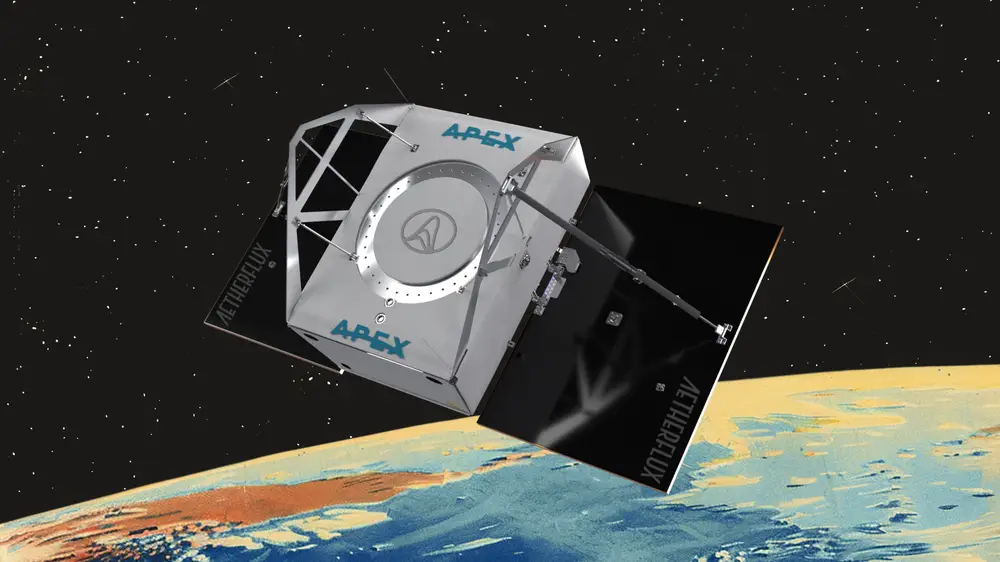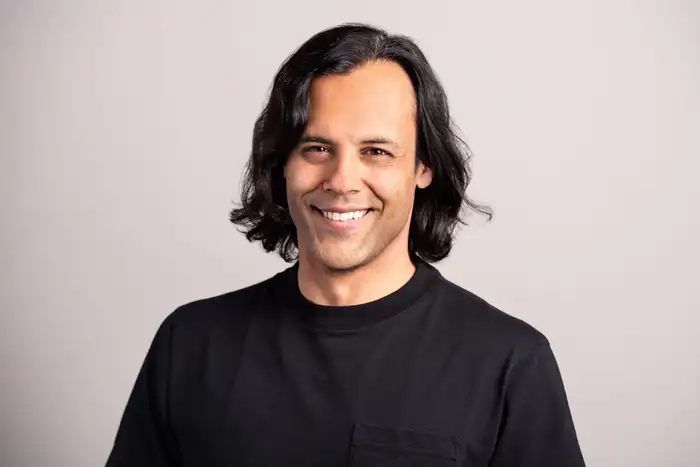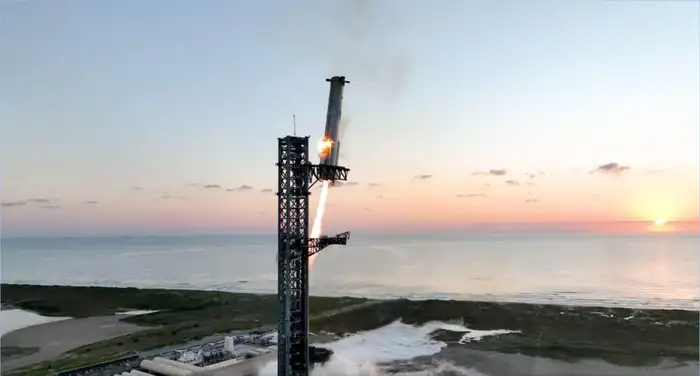Robinhood’s cofounder has joined the rapidly growing commercial space race, and wants to beam solar power from satellites to earth

Aetherflux plans to launch a constellation of satellites capable of transmitting solar power to Earth.
When Baiju Bhatt co-founded the stock trading app Robinhood in 2013 with his college best friend, Vlad Tenev, the aim was to “democratize finance for all.”
Robinhood’s no-fee, gamified approach to investing made capital markets more accessible than ever before, leading to an IPO in 2021.
After over a decade at the company, Bhatt stood down as Robinhood’s chief creative officer in March to pursue what was described at the time as “other entrepreneurial interests.”
In October, Bhatt announced he was launching Aetherflux, a Silicon Valley-based space startup.
Aetherflux aims to create a constellation of satellites in low Earth orbit (LEO) that will collect solar power and beam it down to receptors on Earth using infrared lasers.
Just as Elon Musk’s Starlink constellation has transformed communications, Bhatt hopes Aetherflux will revolutionize energy, he told B-17 in an interview.
The receptors will be just 10 meters in diameter, Bhatt said, meaning they can be placed virtually anywhere and theoretically provide power to remote locations that would otherwise be too expensive or dangerous to reach.
“If we succeed, we unlock a renewable energy source for humanity that can be delivered virtually anywhere,” he wrote in a LinkedIn post announcing Aetherflux.
If it works, far more solar power can be captured in orbit than through the atmosphere at ground level, and there would be no nighttime or weather disruptions to the power source. It would also free up land used for solar farms on Earth.
Aetherflux plans to start by powering military operations in remote locations or remote mining operations, Bhatt said.

Bhatt said working in the space industry has been his “lifelong calling.”
Bhatt hopes that a single receptor will one day be able to capture enough power for a small neighborhood of homes. He added that they’d need around 100 satellites to provide continuous power to one location.
The idea of space-based solar power has existed for decades, but theories have generally rested on large constructions being sent into orbit and using microwaves to transmit energy.
In January 2023, the California Institute of Technology launched a solar space-power demonstrator satellite into orbit for a yearlong mission to test out a range of potential approaches.
Caltech’s president, Thomas F. Rosenbaum, said the project had shown them that solar power beamed from space “is still a future prospect” but that it “should be an achievable future.”
Aetherflux wants to do things differently by using infrared lasers and a modular approach.
The science has already been demonstrated; it’s just going to be an engineering and economic feat to prove it can be done from space, Bhatt said.
To begin with, Aetherflux plans to send a single satellite into orbit by the first quarter of 2026 to demonstrate that solar energy transmission is possible.
The right time to be in space
Though the career jump from finance to the space industry may seem unusual, Bhatt said space has been his “lifelong calling.”
NASA was a part of Bhatt’s childhood. His father moved to the US from India to pursue physics and got a job at NASA’s Langley Research Center in the 1990s studying atmospheric sciences.
With a bachelor’s in physics and a master’s in mathematics, both from Stanford, Bhatt thought he’d be a physicist too. So, Robinhood was a “bit of a detour,” he told B-17.
He is still a board member but has stepped back from day-to-day operations.
One lesson Bhatt said he learned from running the trading app was how powerful capitalism could be in accelerating innovation.
“If you can take a problem that’s been stagnating and you can create a capitalist system around it where people can make money doing something, you’ll see the rate of progress really speed up,” he said.

Vlad Tenev and Baiju Bhatt co-founded the online brokerage Robinhood in 2013.
After meeting with people working on power for DARPA at the beginning of this year and seeing the timeline Starship is on, Bhatt decided that the best opportunities were now in space.
Since 2009, the sum of private investments in space startups has soared from essentially nothing to $327.3 billion, according to the latest “Space Investment Quarterly” report published by venture capital and angel-investment firm Space Angels.
The industry’s value is expected to continue booming. McKinsey estimates that the global space economy will be worth $1.8 trillion by 2035, accounting for inflation, up from $630 billion in 2023.
“It’s hard to find something more exciting and impactful than space,” said Matthew Weinzierl, a professor of the economics of space at Harvard Business School and coauthor of the upcoming book “Space to Grow.”
“This really is a new frontier, one where technological innovation can create new markets and solve real problems, often in ways we haven’t thought of before,” he said.
Weinzierl said that in the past two decades, the US government has created pathways for commercial players, enabling market forces to take hold.
“Prices to orbit have dropped, launch availability has soared, and a wave of entrepreneurs are finding new ways to create value,” he said.

SpaceX made history by returning the Heavy Booster to its launch site in October 2024.
With so many more commercially available products, space has never been cheaper.
Aetherflux is an example of how companies are using off-the-shelf solutions to speed up development. Its satellites are purchased readymade from satellite bus provider Apex, the high-powered lasers it plans to use are commercially available, and it’ll be using SpaceX as a launch partner for its 2026 mission.
“The part that we’re building is the actual optical design, the control systems, and the power transmission link, as well as the ground station,” said Bhatt.
The future of Aetherflux
When he spoke with B-17, Bhatt had just moved into a lab facility in the Bay Area. With a team of 10 employees, he will begin iterating ground tests, developing the system design, and working with regulators.
He’s self-funding the project “completely,” he told B-17. As one of Robinhood’s cofounders, Bhatt’s net worth spiked after its IPO in 2021. He is worth around $1.7 billion, Forbes reports.
Although access to space has become more routine and affordable, Weinzierl said there is still a lot of uncertainty around the industry. Some of the ideas and businesses being developed today won’t survive, but they’ll be “the foundation that tomorrow’s entrepreneurs will learn from and build on,” he said.
A self-proclaimed science nerd, Bhatt named his startup after a 19th-century theory about a pervasive medium called the aether, which physicists believed light traveled through.
“Einstein came along in 1905 and was basically like, nah, that stuff’s all wrong. Light is the same in every reference frame,” said Bhatt.
So Aetherflux is named after a disproven scientific theory? Yes, Bhatt agreed with amusement. But he’s “laser-focused” on the first mission and adamant that Aetherflux won’t fall into the same bracket as its namesake.
“Space is hard,” he admitted, “but we’re committed to demonstrating this and making it happen.”






